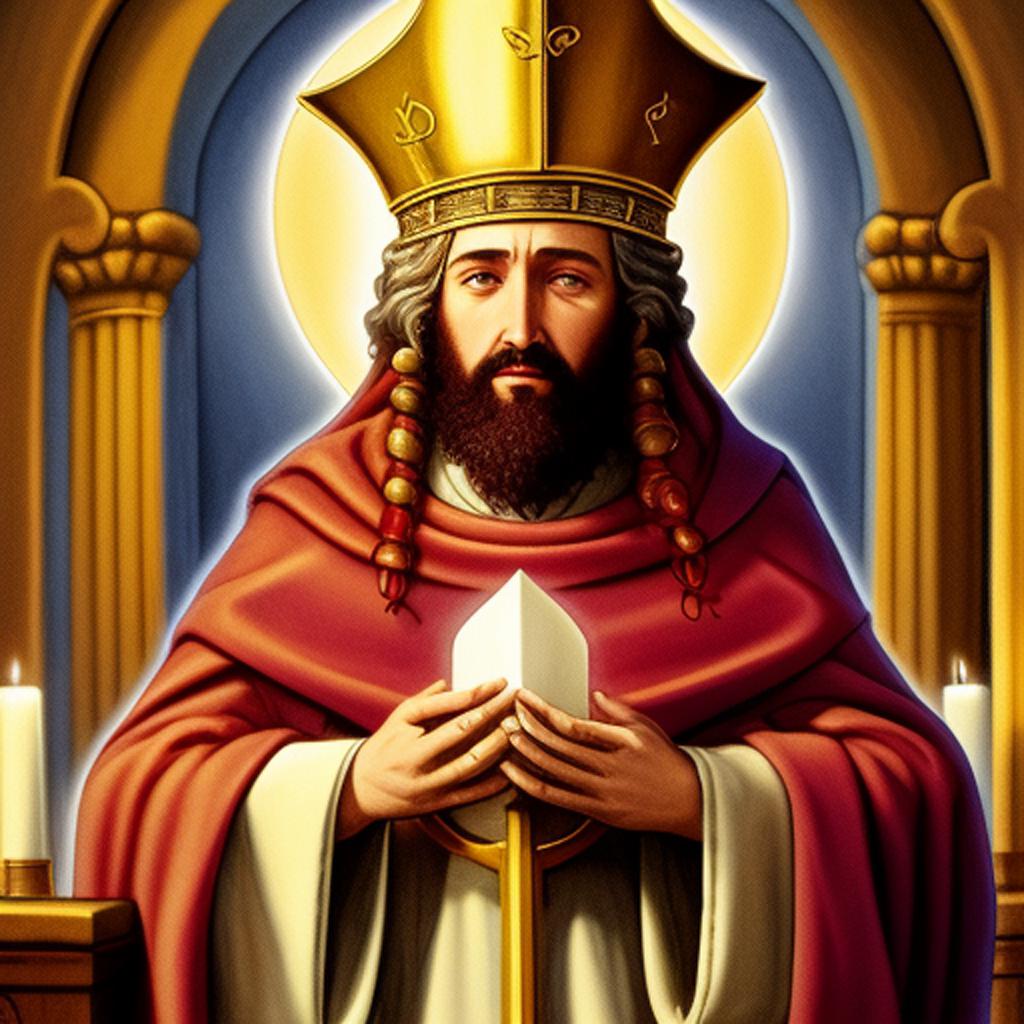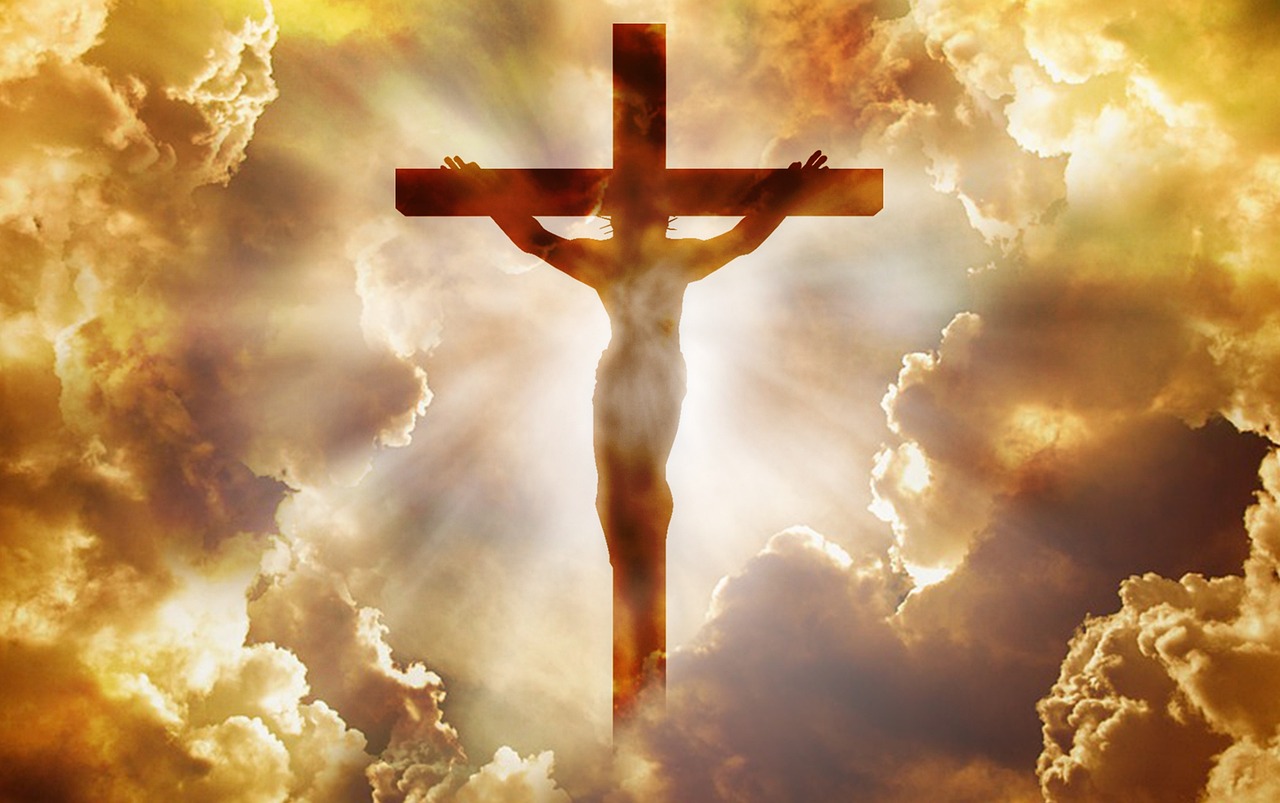Introduction
The book of Leviticus is a significant part of the Old Testament that provides instructions for the observance of various feasts and holy days. In Leviticus 23, we encounter a chapter that details the specific feasts and holy days that the Israelites were commanded to observe. The significance of Leviticus 23 lies in its connection to Messianic Jesus, as these feasts and holy days foreshadow and find their fulfillment in the life, death, and resurrection of Jesus Christ.
Understanding the connection between Leviticus 23 and Messianic Jesus is crucial for believers as it illuminates the intricate plan of God’s redemption and His unfolding work throughout history. In this article, we will explore what happened in Leviticus 23 and how it relates to Messianic Jesus. By examining the feasts and holy days mentioned in Leviticus 23 and their connection to Jesus as the Messiah, we can gain a deeper appreciation for the fulfillment of Messianic prophecies and the significance of Jesus’ ministry.
Overview of Leviticus 23
Leviticus 23 serves as a guidebook for the Israelites, providing instructions on how to observe the feasts and holy days ordained by God. This chapter outlines seven annual feasts, each with its own unique significance and purpose.These feasts were designated as holy convocations, sacred gatherings for the people of God.
The feasts and holy days mentioned in Leviticus 23 are not mere ceremonial rituals but hold profound spiritual and prophetic meanings. Each feast points to a specific aspect of God’s redemptive plan and finds its ultimate fulfillment in the person and work of Jesus Christ. These feasts are a display of gratitude for God’s mercy and providential care throughout the history of Israel.
Feasts and Holy Days in Leviticus 23
Sabbath
The first feast mentioned in Leviticus 23 is the Sabbath, a day of rest and sacred gathering for the people of God. The Sabbath was instituted as a reminder of God’s creation and His commandment to set aside one day for rest and worship. It was a time for the Israelites to cease their work and focus on their relationship with God.
The observance of the Sabbath provided an opportunity for the Israelites to experience God’s provision and to trust in His faithfulness. It served as a reminder of their deliverance from slavery in Egypt and their identity as God’s chosen people. Through the Sabbath, the Israelites were reminded of their dependence on God and their need for rest and renewal.
Passover
The next feast mentioned in Leviticus 23 is Passover, which commemorates Israel’s deliverance from Egypt. The Passover feast holds significant Messianic implications as it foreshadows Jesus’ role as the ultimate Passover Lamb.In the book of Exodus, we read about the institution of the Passover lamb, whose blood on the doorposts protected the Israelites from the final plague of death.
Just as the blood of the Passover lamb saved the Israelites from physical death, Jesus, as the Lamb of God, shed His blood to save humanity from the bondage of sin and eternal death. Jesus’ sacrificial death on the cross occurred during the Passover season, fulfilling the symbolism and purpose of the Passover feast. Through His death, Jesus became the ultimate Passover Lamb, providing salvation and deliverance for all who would believe in Him.
Feast of Unleavened Bread
The Feast of Unleavened Bread follows immediately after the Passover feast and lasts for seven days. During this feast, the Israelites were commanded to remove all leaven from their households and eat unleavened bread. The removal of leaven symbolizes the removal of impurity and sin from their lives.
The Feast of Unleavened Bread finds its fulfillment in Jesus’ sacrifice on the cross. Leaven, in the Bible, often represents sin and corruption. By living a sinless life and offering Himself as a perfect sacrifice, Jesus became the unleavened bread, symbolizing purity and sanctification. Through Jesus’ sacrifice, we are cleansed from our sins, and the power of sin is broken in our lives.
Firstfruits
The Feast of Firstfruits is celebrated on the day after the Sabbath following Passover. It is a celebration of the harvest and the offering of the first ripened stalks of grain to God. The presentation of the firstfruits is an act of gratitude and acknowledgment that all good gifts come from God.
The Feast of Firstfruits holds Messianic significance as it points to Jesus as the firstborn from the dead. In the New Testament, the Apostle Paul refers to Jesus as the firstfruits of those who have fallen asleep, meaning that His resurrection guarantees the resurrection of all believers. Jesus’ victory over death and His resurrection paved the way for our own resurrection and eternal life.
Feast of Weeks (Pentecost)
The Feast of Weeks, also known as Pentecost, is celebrated fifty days after the Feast of Firstfruits. This feast marks the birth of the Church and the harvest of souls. During Pentecost, the Israelites were instructed to offer two leavened loaves of bread, representing the inclusion of Gentiles in God’s redemptive plan.
Pentecost is of great significance in the New Testament as it was during this feast that the Holy Spirit was poured out upon the early believers, empowering them for ministry and marking the birth of the Church. The inclusion of Gentiles in the Church demonstrates the universal scope of God’s salvation and His desire to reconcile all people to Himself.
Feast of Trumpets
The Feast of Trumpets, also known as Rosh Hashanah, is celebrated on the first day of the seventh month of the Hebrew calendar. It is a day of blowing trumpets and a holy convocation.Although Leviticus 23 does not provide explicit details about the significance of this feast, it is associated with the gathering of God’s people.
Some scholars believe that the Feast of Trumpets may have a future prophetic significance related to the rapture of the Church and the gathering of Israel for God’s special purpose. The blowing of trumpets is often associated with important events in the Bible and can symbolize a call to repentance, war, or the announcement of a significant event. The exact fulfillment and meaning of this feast are still a subject of debate among theologians.
Day of Atonement
The Day of Atonement, also known as Yom Kippur, is considered the most solemn day of the year in the Jewish calendar. It is a day of fasting, repentance, and recognition of sin. The high priest would enter the Holy of Holies and make atonement for the sins of the people.
The Day of Atonement holds Messianic significance as it points to Jesus as the ultimate high priest and atoning sacrifice. Jesus’ death on the cross accomplished what the sacrificial system of the Old Testament could not—an eternal atonement for sin. Through His sacrifice, Jesus provided forgiveness and reconciliation between God and humanity.
Feast of Tabernacles
The Feast of Tabernacles, also known as the Feast of Booths or Sukkot, is celebrated in the fall and lasts for seven days. During this feast, the Israelites would dwell in temporary shelters made of branches to commemorate their time in the wilderness. The feast represents the millennial rest and comfort of God for Israel and all believers.
The Feast of Tabernacles holds Messianic implications as it points to Jesus’ presence and teachings during this feast. In the New Testament, we read about Jesus attending the Feast of Tabernacles and proclaiming Himself as the giver of living water and the light of the world. The Feast of Tabernacles also symbolizes the future fulfillment of God’s promises and the restoration of fellowship with Him in His Kingdom.
Connection between the Feasts and Jesus as the Messiah
The feasts and holy days mentioned in Leviticus 23 find their ultimate fulfillment in Jesus Christ, establishing a profound connection between the Old Testament and Messianic Jesus. Each feast foreshadows and points to a specific aspect of Jesus’ role as the Messiah, revealing His redemptive work and the fulfillment of Messianic prophecies.
For example, the Passover feast symbolizes Jesus’ sacrificial death on the cross, just as the blood of the Passover lamb saved the Israelites from physical death. Jesus became the ultimate Passover Lamb, providing salvation and deliverance from the bondage of sin. The Feast of Unleavened Bread represents the purity and sanctification that believers experience through Jesus’ sacrifice. The Feast of Firstfruits points to Jesus as the firstborn from the dead, guaranteeing our own resurrection and eternal life. Pentecost marks the birth of the Church and the inclusion of Gentiles in God’s redemptive plan.
Understanding the fulfillment of these feasts in Jesus’ ministry is essential for believers. It deepens our understanding of God’s redemptive plan, strengthens our faith, and provides a solid foundation for our hope in Christ. The feasts in Leviticus 23 are not mere historical events but prophetic symbols that point to Jesus as the promised Messiah.
Relevance of Leviticus 23 in Understanding Jesus’ Ministry
Leviticus 23 is not only relevant for understanding the connection between the Old Testament and Messianic Jesus but also for understanding the cultural and religious context of Jesus’ ministry. Jesus Himself observed the feasts and holy days mentioned in Leviticus 23, demonstrating their importance and significance.
By examining Jesus’ teachings and actions during these feasts, we gain insights into His identity, purpose, and mission. For example, during the Feast of Tabernacles, Jesus proclaimed Himself as the giver of living water and the light of the world. His teachings and actions during the feasts provide a deeper understanding of His role as the Messiah and the fulfillment of Messianic prophecies.
Feasts Pointing to Jesus’ First Coming
The feasts mentioned in Leviticus 23 not only point to Jesus’ first coming but also highlight the precise timing of the fulfillment of Messianic prophecies. There is evidence that Jesus fulfilled the feasts pointing to His first coming on the exact day of the feast, further validating His role as the promised Messiah.
For instance, Jesus’ sacrificial death on the cross occurred during the Passover season, aligning with the symbolism and purpose of the Passover feast. Just as the lamb was slain on the day of Passover, Jesus became the ultimate Passover Lamb, providing salvation and deliverance for all who believe in Him.
The Feast of Unleavened Bread, which represents purity and sanctification, found its fulfillment in Jesus’ sacrifice. Through His death, burial, and resurrection, Jesus provided the means for believers to be cleansed from sin and live a life of holiness.
Similarly, the Feast of Firstfruits, which celebrates the offering of the first ripened stalks of grain, points to Jesus as the firstborn from the dead. Jesus’ resurrection guarantees the resurrection of all believers, who will share in His victory over death.
Pentecost, the birth of the Church and the inclusion of Gentiles, aligns with the outpouring of the Holy Spirit on the early believers. Through the Holy Spirit, believers are empowered to carry out the Great Commission and proclaim the gospel to all nations.
Feasts Pointing to Jesus’ Second Coming
While the feasts in Leviticus 23 find their initial fulfillment in Jesus’ first coming, some feasts also point to His second coming. The Feast of Trumpets, the Day of Atonement, and the Feast of Tabernacles hold significant prophetic implications related to Jesus’ return and the final judgment.
Although Leviticus 23 does not explicitly detail the significance of the Feast of Trumpets, it is associated with the gathering of God’s people and potential prophetic events. Some scholars suggest that this feast may have a future fulfillment related to the rapture of the Church and the gathering of Israel for God’s special purpose.
The Day of Atonement, a solemn day of fasting and repentance, holds Messianic significance in relation to Jesus’ role as the ultimate high priest and atoning sacrifice. Through His death on the cross, Jesus provided forgiveness for sin and reconciliation between God and humanity. The Day of Atonement may also symbolize the recognition of Jesus as the high priest and atoning sacrifice by the nation of Israel during the Great Tribulation.
The Feast of Tabernacles represents the millennial rest and comfort of God for His people. This feast is associated with the future fulfillment of God’s promises and the establishment of His Kingdom, where Jesus will reign with authority and judgment. The Feast of Tabernacles points to the ultimate fulfillment of God’s redemptive plan and the eternal fellowship with Him.
The Promised Messiah and the Feasts of Israel
The feasts and holy days mentioned in Leviticus 23 played a significant role in the anticipation of the arrival of the promised Messiah. These Hebrew feasts served as a foreshadowing of God’s redemptive plan and outlined His work of salvation and redemption.
During the Feast of Tabernacles, Jesus dwelt among the people, proclaiming Himself as the giver of living water and the light of the world. His presence during this feast emphasized the connection between the Hebrew feasts and His role as the promised Messiah.
The Hebrew feasts, including Passover, Unleavened Bread, Firstfruits, Weeks/Pentecost, Trumpets, Atonement, and Tabernacles, outline God’s plan for salvation and redemption. Each feast points to Jesus’ role as the Messiah and signifies an important aspect of His ministry and the fulfillment of Messianic prophecies.
For example, Passover represents redemption and justification through the blood of Jesus, our Passover Lamb. Unleavened Bread symbolizes fleeing from the bondage of sin and the sanctification process made possible through Jesus’ sacrifice. Firstfruits represents resurrection, with Jesus being the first fruit of our own resurrection. Weeks/Pentecost symbolizes the joining together of Jews and Gentiles into the Church through the Holy Spirit. Trumpets anticipates the rapture of the Church. Atonement represents a day of forgiveness for Israel and their recognition of Jesus as their high priest and atoning sacrifice. Tabernacles represents restored fellowship with the Lord in His Kingdom, where Jesus reigns with authority and judgment.
The Lord’s Appointed Times and their Fulfillment
The Lord’s appointed times, as outlined in Leviticus 23, are festivals and holy days that commemorate significant times and events in Israel’s history. These holidays serve as reminders of God’s salvation, love, and plans, and teach important truths about His redemptive work.
The Jewish calendar, based on the relative motion of the moon and the sun, marks the festivals according to the phases of the moon. Passover commemorates the birth of the nation of Israel and their escape from slavery in Egypt, reminding them of God’s redemption. The Feast of Unleavened Bread represents the speed of their salvation and the removal of sin. The Wave Offering of First Fruits celebrates the provision of God and foreshadows Jesus’ resurrection. Pentecost marks the giving of the Holy Spirit and the promise of eternal life and resurrection. The Feast of Trumpets announces the coming of the King and calls for repentance and preparation. The Day of Atonement is a solemn day of rest and fasting, symbolizing the payment and removal of sin. The fall holy days foreshadow the return of Jesus and the final judgment.
These festivals and holy days were fulfilled in Jesus’ first advent and will be fulfilled in His second coming. The Eucharist, a feast of remembrance and anticipation of Christ’s sacrifice and future return, connects believers to the significance of these appointed times. As Christians, we can find a deeper understanding of God’s salvation plan through the fulfillment of these holidays in Jesus.
Conclusion
In conclusion, Leviticus 23 provides instructions for the observance of feasts and holy days that hold significant Messianic implications. The feasts mentioned in Leviticus 23 find their ultimate fulfillment in Jesus Christ and establish a profound connection between the Old Testament and Messianic Jesus. Each feast foreshadows and points to a specific aspect of Jesus’ role as the Messiah, revealing His redemptive work and the fulfillment of Messianic prophecies.
Understanding the connection between Leviticus 23 and Messianic Jesus is vital for believers. It deepens our understanding of God’s redemptive plan, strengthens our faith, and provides a solid foundation for our hope in Christ. The feasts and holy days in Leviticus 23 are not mere historical events but prophetic symbols that point to Jesus as the promised Messiah.
By studying Leviticus 23 and its connection to Messianic Jesus, we gain a deeper understanding of God’s redemptive plan and the significance of Jesus’ ministry. The feasts and holy days described in Leviticus 23 provide a framework for understanding the cultural and religious context of Jesus’ ministry. Moreover, they offer valuable insights into Jesus’ teachings and actions during these feasts, revealing His identity, purpose, and mission.
As believers, let us continue to explore the rich connection between the Old Testament and Jesus’ ministry. May we be inspired by the fulfillment of Messianic prophecies in Jesus Christ and deepen our love and devotion to our Savior, who fulfills the law and the prophets.
#Leviticus23 #JesusChrist #BiblicalFestivals #PropheticSymbolism #ChristianFaith #OldTestament #RedemptionHistory #MessianicConnections #SpiritualTeachings #FaithJourney #ReligiousObservance #DivinePlan #BiblicalInterpretation #FeastsofIsrael #BiblicalContext #ReligiousHeritage #BiblicalUnderstanding #SignificanceofLeviticus23 #SpiritualReflections
#FaithandBelief



